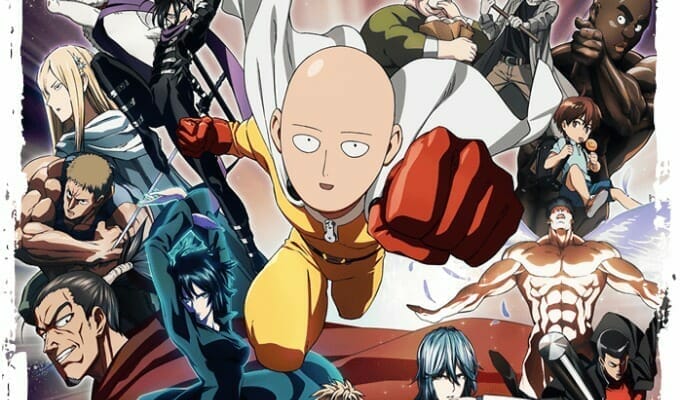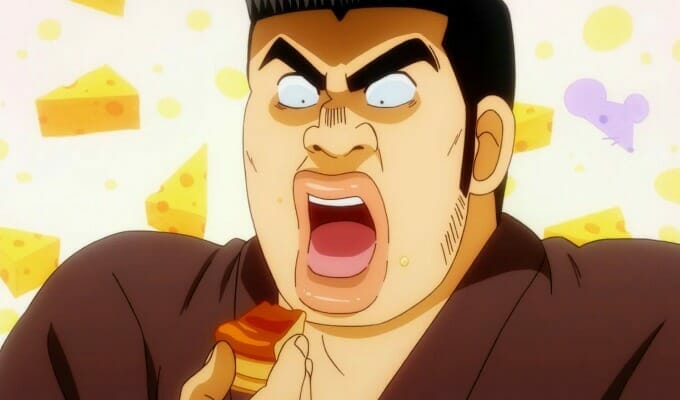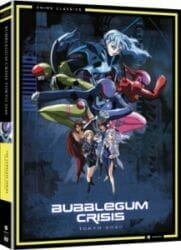 Remakes and revisits of popular shows are a fairly common sight in the anime world. Gundam gets its regular update every few years, Captain Harlock gets regular additions to his lore, and even seemingly forgotten titles like Burn-Up get visits from the revision fairy. With each update, there’s a degree of excitement and trepidation that arises in the fanbase, as every good remake seems to be surrounded by four or five terrible ones. Bubblegum Crisis, a landmark title from the ’80s that rose to fame with a cinematic style and incredible music, was one such title. Crisis already received a lackluster sequel in 1991 that soured the opinions of many viewers. By the time 1998 rolled around and rumblings of a reboot were afoot, many were understandably wary. With a new look, new format, and less music, it seemed as if viewers would be in for a downgrade. First appearances proved to be false, though, as the sequel proved to be an equal to its predecessor in nearly every way.
Remakes and revisits of popular shows are a fairly common sight in the anime world. Gundam gets its regular update every few years, Captain Harlock gets regular additions to his lore, and even seemingly forgotten titles like Burn-Up get visits from the revision fairy. With each update, there’s a degree of excitement and trepidation that arises in the fanbase, as every good remake seems to be surrounded by four or five terrible ones. Bubblegum Crisis, a landmark title from the ’80s that rose to fame with a cinematic style and incredible music, was one such title. Crisis already received a lackluster sequel in 1991 that soured the opinions of many viewers. By the time 1998 rolled around and rumblings of a reboot were afoot, many were understandably wary. With a new look, new format, and less music, it seemed as if viewers would be in for a downgrade. First appearances proved to be false, though, as the sequel proved to be an equal to its predecessor in nearly every way.
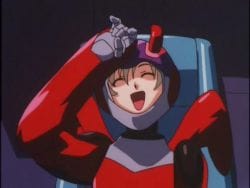 In the year 2040, the City of Tokyo is a pristine wonderland of civilized life after a magnificent recovery from a catastrophic earthquake. With the aid of robots known as Boomers, the city flourished, and stands as a shining beacon of civilization. These robots, created by the Genom corporation, quickly became a part of everyday life, as they took positions as street cleaners, store clerks, and even office workers. Not all is well, though, as these robots aren’t entirely perfect. A small population of Boomers is known to go mad, wreaking havoc upon the metropolis. The city’s AD Police isn’t the most effective force against the menace, so a small group of power suit wearing vigilantes known as The Knight Sabers took the task into their own hands. Their watch may not be enough though, as the attacks continue to escalate and a malevolent force from before the quake threatens humanity itself.
In the year 2040, the City of Tokyo is a pristine wonderland of civilized life after a magnificent recovery from a catastrophic earthquake. With the aid of robots known as Boomers, the city flourished, and stands as a shining beacon of civilization. These robots, created by the Genom corporation, quickly became a part of everyday life, as they took positions as street cleaners, store clerks, and even office workers. Not all is well, though, as these robots aren’t entirely perfect. A small population of Boomers is known to go mad, wreaking havoc upon the metropolis. The city’s AD Police isn’t the most effective force against the menace, so a small group of power suit wearing vigilantes known as The Knight Sabers took the task into their own hands. Their watch may not be enough though, as the attacks continue to escalate and a malevolent force from before the quake threatens humanity itself.
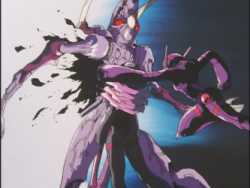 Beneath the grand story of murderous robot marauders and vigilante justice is a tale of humanity, and of corporate intrigue. Everybody has a story to tell, from the executives of GENOM to those who inhabit the city’s filthy slums. Through their exploits, the Knight Sabers bear witness to tales of abused boomers, betrayed lovers, and broken families. These experiences intertwine into their own lives, and flavor the divide between desperation and survival that exists just beneath the city’s shiny exterior. The arrival of the show’s main antagonist pushes events into a fever pitch and the focus changes from the city’s residents to a greater “save the world” plot. As the machines continue to go berserk, and the stakes grow more perilous, the Knight Sabers and their greatest rivals in the AD Police find themselves in an unlikely alliance that is a bit too convenient. The ending becomes more of a self-fulfilling prophecy that, while thrilling to watch, is far from unpredictable. As the show races through its final episodes characters are forced into awkward relationships and the strong narrative built through the first twenty episodes begins to disintegrate. While it’s not enough to take the show down completely, it certainly detracts from the impact of the finale.
Beneath the grand story of murderous robot marauders and vigilante justice is a tale of humanity, and of corporate intrigue. Everybody has a story to tell, from the executives of GENOM to those who inhabit the city’s filthy slums. Through their exploits, the Knight Sabers bear witness to tales of abused boomers, betrayed lovers, and broken families. These experiences intertwine into their own lives, and flavor the divide between desperation and survival that exists just beneath the city’s shiny exterior. The arrival of the show’s main antagonist pushes events into a fever pitch and the focus changes from the city’s residents to a greater “save the world” plot. As the machines continue to go berserk, and the stakes grow more perilous, the Knight Sabers and their greatest rivals in the AD Police find themselves in an unlikely alliance that is a bit too convenient. The ending becomes more of a self-fulfilling prophecy that, while thrilling to watch, is far from unpredictable. As the show races through its final episodes characters are forced into awkward relationships and the strong narrative built through the first twenty episodes begins to disintegrate. While it’s not enough to take the show down completely, it certainly detracts from the impact of the finale.
 The futuristic city of Tokyo is a rich tapestry of futuristic living that’s given its own identity by a charismatic cast. From the spunky Nene, to the butch, soft-spoken Priss and the self-serving Mason, everybody has their motives for entering the battle between the people and the corporations. It quickly becomes apparent though, that there are no supermen. Nobody is truly good or bad, as everybody’s faults and insecurities begin to bubble to the surface. Even the mad boomers, mere monsters in the traditional light, begin to be seen as unfortunate victims, as the abuses they endure at the hands of man are bared to the audience.
The futuristic city of Tokyo is a rich tapestry of futuristic living that’s given its own identity by a charismatic cast. From the spunky Nene, to the butch, soft-spoken Priss and the self-serving Mason, everybody has their motives for entering the battle between the people and the corporations. It quickly becomes apparent though, that there are no supermen. Nobody is truly good or bad, as everybody’s faults and insecurities begin to bubble to the surface. Even the mad boomers, mere monsters in the traditional light, begin to be seen as unfortunate victims, as the abuses they endure at the hands of man are bared to the audience.
Fans of the original Bubblegum Crisis will warmly recall the intense action sequences set to ’80 rock tracks like Konya wa Hurricane, Soldier Girls, and Victory. The music was a defining aspect of the show. This isn’t the case in 2040. While there are a few vocal tracks scattered through the show, much of the soundtrack is comprised of a mix of synthesized melodies and grungy guitar riffs. None of the tracks are particularly memorable, though they certainly help to sell the mood of the techno-industrial wasteland of Tokyo.
Aside from the lack of audio oomph, Bubblegum Crisis: Tokyo 2040 is a fantastic update of the 1987 classic. The show retains the charm that made audiences fall in love with the original Knight Sabers, while introducing a stronger, more tightly written narrative and a more defined aesthetic. Fans of the original Bubblegum Crisis, as well as those searching for a satisfying science fiction epic will not be disappointed.
Bubblegum Crisis: Tokyo 2040 is distributed in America by FUNimation.
The series can be purchased at Right Stuf.
Thanks to FUNimation for providing a review copy!



